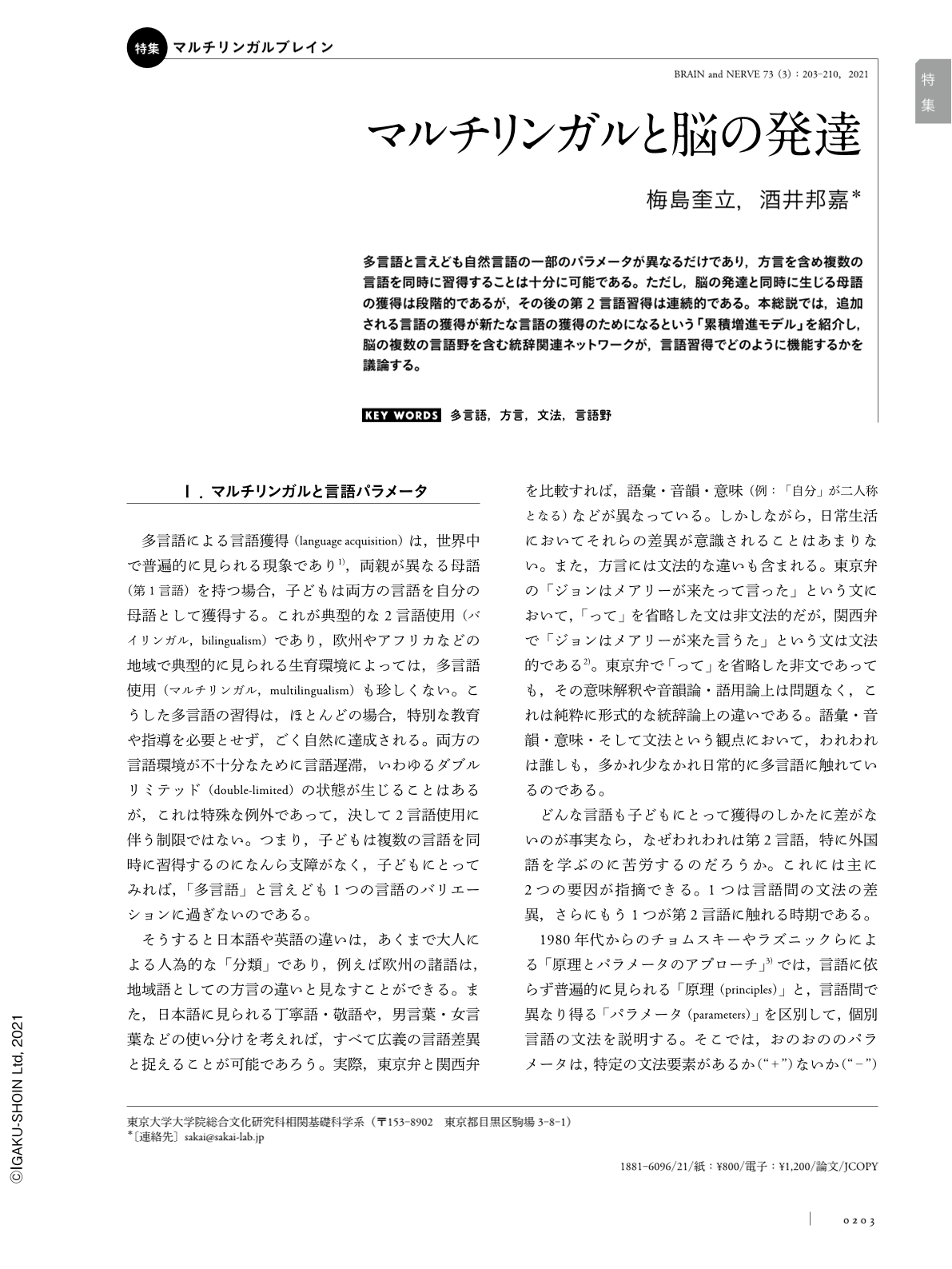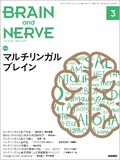Japanese
English
- 有料閲覧
- Abstract 文献概要
- 1ページ目 Look Inside
- 参考文献 Reference
多言語と言えども自然言語の一部のパラメータが異なるだけであり,方言を含め複数の言語を同時に習得することは十分に可能である。ただし,脳の発達と同時に生じる母語の獲得は段階的であるが,その後の第2言語習得は連続的である。本総説では,追加される言語の獲得が新たな言語の獲得のためになるという「累積増進モデル」を紹介し,脳の複数の言語野を含む統辞関連ネットワークが,言語習得でどのように機能するかを議論する。
Abstract
Multilingualism is merely a parametric variation in the faculty of natural language, and it is possible to simultaneously acquire multiple languages, including dialects, at any age. While acquisition of a native language, which occurs in synchrony with development of the brain, is a multiple-step process, second language acquisition is continuous. Here, we introduce the Cumulative-Enhancement model, which states that acquisition of one additional language is beneficial for the subsequent acquisition of another. We further discuss how syntax-related networks, including multiple language areas in the brain, become functional during the course of language acquisition.

Copyright © 2021, Igaku-Shoin Ltd. All rights reserved.


